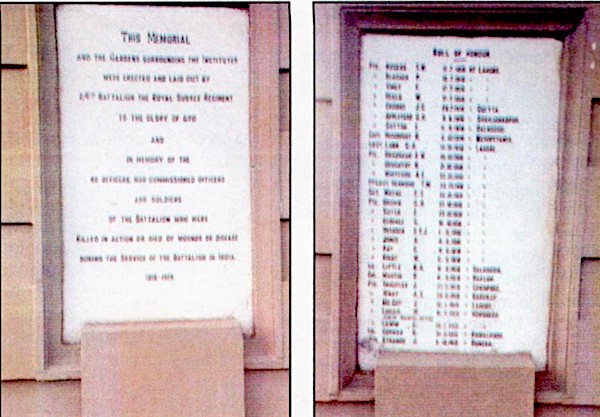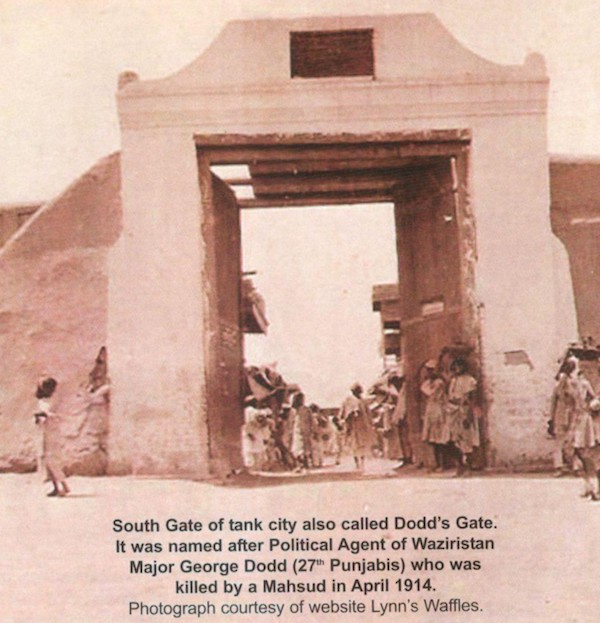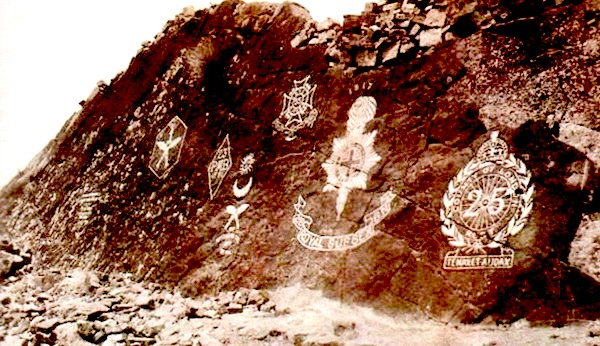On the eve of the First World War, the British army consisted of the regular army, territorial forces and reserves. The recruitment of regular infantry regiments was county based. Each infantry regiment consisted of two battalions. Territorial force consisted of part-time soldiers. County associations trained and equipped territorial battalions. These associations were controlled by local landlords. Territorial forces were not required to serve overseas. Reserves were of two categories first was a general reserve consisting of soldiers who had served in the regular army and required to be recalled in case of a war the second reserve consisted of men with no previous military experience but required to serve in the regular army in case of war.
In 1908, ten cyclist battalions were raised from territorial forces, their main role was reconnaissance and communications. They were also armed as infantry and could in the be used as a mobile unit. Great War, initially cyclist battalions were used for costal defense. Later they were converted into infantry battalions and served in many theatres of war.
6th Royal Sussex Regiment was a cyclist battalion with three battalions. 2nd Battalion of 6th Royal Sussex Regiment was a territorial battalion. It was raised in October 1914 as a cyclist battalion at Brighton In March 1915, Major Johnson was in temporary command and battalion was attached to 1st Mountain Division for coastal defense of Britain. The battalion was headquartered at Southold and for first six months of 2015 was coastal engaged in training, defense, trench digging and musketry training. During this time battalion was transferred to 1st Army and later 2/1 London Division and 2/1 Welch Division. In the second half of 2015, the battalion was stationed at Norwich and Potter Heigham. There were many problems during training as two different types of rifles were given to the battalion. In addition, no bayonets were provided for one pattern of rifle.
In November 1915, (Cyclist) Battalion Royal Sussex Regiment along with three other Cyclist battalions, 1125th (Cyclist) London Regiment, 1/1 (Cyclist) Battalion Kent Regiment and 1/9 (Cyclist) Battalion Hampshire Regiment were converted to infantry and brigaded together. The Cyclist title was dropped when these battalions were converted to infantry. This brigade was originally ordered to go to East Africa but in February 1916, it sailed for India.



(Photograph courtesy of website Lynn’s Waffles.)
South Waziristan Field Force Order of Battle 1917
Commander Major General W.G.L. Beynon
43rd Brigade
1st Battalion of 25th London Regiment
54th Sikhs
1st Rifles of Nepalese Contingent
1/2 Squadron 11 King Edward’s Own Lancers (Probyn’s Horse)
30th Mountain Battery (Two Sections)
1st Mountain Battery (One Section)
No: 7 Company, 1st King George’s Own Sappers and Miners
45th Brigade
2nd Battalion of 6th Royal Sussex Regiment
55th Coke’s Rifles
2nd Battalion of 1st King George’s Own Gurkha Rifles
Mahindra Dal Regiment (Nepalese Contingent)
1/2 Squadron 11 King Edward’s Own Lancers (Probyn’s Horse)
23rd Peshawar Mountain Battery
No: 11 Company, 2nd Queen Victoria’s Own Sappers and Miners
Line of Communication Defenses
Alwar Lancers (One Squadron)
21st Punjabis
46th Punjabis
1-94th Russell’s Infantry
1-124th Baluchistan Infantry (One Wing)
127th Baluchistan Infantry
1-107th Pioneers
During the Great War, the frontier was surprisingly quiet with no major trouble from all tribal groups except for Mahsuds in Waziristan. Majority of British regiments stationed in India as well as experienced Indian regiments were shipped to major theatres of war in Europe, Middle East and East Africa. War time raised battalions of Indian army with old pensioners and fresh recruits and territorial battalions of British army were used for internal security duties. The King of Nepal sent a Nepalese contingent for internal security duty in India.

In general government policy was to avoid any friction with the tribes and many outrages by tribes were ignored. Some Mahsud clans thinking that the government was in a difficult position engaged in periodic raids on border villages and militia posts. By the spring of 1917, the trouble roster of Mahsuds reached a point where the government decided that a punitive expedition was needed. South Waziristan Filed Force (later named Waziristan Field Force) was assembled. North Waziristan Field Force was kept as reserve with troops stationed at Bannu and Miranshah.
1/25 London Regiment was also a cyclist battalion of the territorial force. It was raised in 1908. It sailed for India in 1916. In Waziristan, it was commanded by Lieutenant Colonel B. M. Hayes. After the Waziristan campaign, more than half of the battalion was sick and soldiers were sent to various hill stations including Gharial and Upper Topa near Murree and Daghshahi. After recuperation and rejoining of sick, the battalion went to Jallandhar. In April 1919 disturbances, a detachment was sent to Amritsar but was not involved in the notorious Jallianwala Bagh massacre. It was part of Tai Relief Force during Third Anglo-Afghan war and in the winter of 1919, it sailed back to England.
55th Coke’s Rifles was raised in May 1849 by Captain John Coke as 1st Punjab Infantry. Coke was from 1oth Bengal Native Infantry. He also served as Deputy Commissioner of frontier district of Kohat. In 1857 mutiny, he marched with his regiment for relief of Delhi He retired as Major General. In 1903, it was named 55th Coke’s Rifles. In 1917, class composition of the battalion was Sikh, Punjab Muslims and Pathans (Afridi’s and Yusufzais). In the 1922 re-organization, it was named 1st Battalion of 13th Frontier Force Rifles. In the 1956 organization of Pakistan army, 1th became 7th Battalion of Frontier Force Regiment.


23rd Peshawar Mountain Battery PMB) was raised in 1853 by Captain Brough man. Initially it consisted of European gunners but in 1854 they were replaced by Indian gunners. In 1858, it became part of Punjab Frontier Force (PIFFERs) to safeguard western frontier passes of India. In 1944, it became an all-Punjabi Muslim formation. In 1956 organization of Pakistan army, it became part of I (SP) Field Regiment of Artillery. In hundred years of its existence, the name changed several times including Peshawar Mountain Train, No 3 Mountain Battery, 23rd Peshawar Mountain Battery, 103rd Peshawar Back Battery, 3rd Peshawar 1ountain Battery and 3rd Peshawar Medium Battery.

(photograph courtesy of website Lynn’s Waffles)
1st Gurkha Rifles was raised after Anglo-Gurkha wars in 1815. It served in many campaigns including Anglo-Sikh wars, Anglo Afghan wars, First and Second World War. Gurkha regiments were two battalion regiments. During Great war, 1/1 Gurkha Rifles served in western theatre as well as in Mesopotamia. 2/1 Gurkha Rifles served on north west frontier in 1915-17, therefore the insignia on the mountain side in the picture is of 2nd Battalion of 1st Gurkha Rifles.
A Nepalese contingent led by General Sir Baber Shams here Singh Bahadur Rana was sent to India for internal security duty. 1st Rifles and Mahindra Dal Regiment were part of Waziristan Field Force. Shere Regiment was with the reserve force.

(Photograph courtesy of website Lynn’s Waffles.
Main punitive operations of Waziristan Field Force lasted for about two months from 10 May to 15 July 1917. Total casualties included three British officers killed and five wounded, three Indian officers killed and twelve wounded and 118 other ranks killed and 192 wounded. However, disease took a greater Toll and about one third of the force was on the sick list at any anytime. In August 1917, Mahsuds agreed to peace terms and it was finalized at a grand jirga of 3000 Mahsuds. During Jirga deliberations, Mahsuds expressed great respect for Gurkha soldiers. One of the techniques of Mahsuds during ambushes was a knife rush that could unnerve even experienced battalions. In many hands to hand fights, the Mahsud long knife was matched by Gurkha’s kukri.
The irony of the times can be judged from that fact that in 1917, the troops fighting against Mahsuds were from different religions and ethnicities. British soldiers from England, Gurkhas from Nepal and Hindu, Sikh and Muslims, Punjabis and Pathans were comrades in arms fighting against Mahsud tribesmen. A century later, militants from Afghanistan, Pakistan, Arab countries, Central Asia and even China found refuge in Waziristan. A single national Pakistan army now fought against so many nationalities and ethnicities including Pathans, Punjabis, Arabs, Uzbeks, Chechens and Uighurs.
Acknowledgement
The author thanks Major General ® Mian N. ljaz of Pakistan Army for the photographs of the memorial that sent the author into the caves of military archeology.
Notes
Operations in Waziristan 19919-1920 (Calcutta: Superintendent Government Printing India, 1921)
https://lynnswaffies.com/2016/1 1/09/royal-Sussex-regiment-www-album/
This site has many rare photographs of 2nd Battalion 6th Royal Sussex Regiment during its stay on the frontier.
http://www2 .westsussex .gov.uk/learning-resources/LR/2-6th _cyclists_ battal ion_ rsr_war_diary_ 1914-17_rsr_ms_6- 5fcd9 .pdf?docid=43dd2d 19-1Of9-4948- a2c2-9ac1851 bad3e&version=-1 This site has photocopy of diaries of 2nd Battalion 6th Royal Sussex Regiment.




